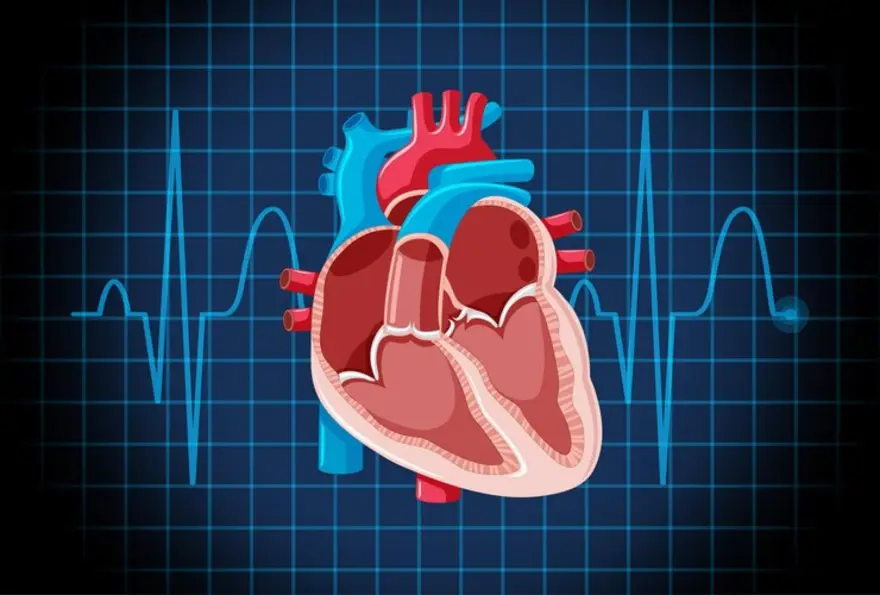rheumatoid arthritis symptoms
What is Psoriatic Arthritis: Symptoms, Treatment & Causes
Introduction Psoriatic arthritis is a type of arthritis that affects individuals with , the disease that causes red patches on your skin that are usually topped with silvery scales. Psoriasis can occur years before you may get diagnosed with psoriatic arthritis, but in rare cases, the joint pain can start before the development of the skin patches or even at the same time. Joint pain, swelling and stiffness are the main psoriatic arthritis symptoms but you can learn more about the symptoms, causes and treatment options below. What is Psoriatic Arthritis? This is a form of inflammatory arthritis that is characterised by swelling, joint pain and stiffness in the morning. It can vary from mild to severe and present in three different ways. Oligoarticular, which affects four or fewer joints in the body Polyarticular, affecting over four joints Spondylitis, this type, is less common but can affect the spine, hips, and shoulders. Symptoms of Psoriatic Arthritis Psoriasis and psoriatic arthritis are chronic diseases that can worsen over time. However, there can be several instances where the symptoms can improve and temporarily disappear. Since psoriatic arthritis affects the joints on either or both sides of the body, the symptoms are usually similar to rheumatoid arthritis. Both of these diseases cause your joints to swell, become painful, and cause the skin to feel warm to the touch. However, there are a few additional psoriatic arthritis symptoms in the case of psoriatic arthritis, such as Swollen fingers and toes: Psoriatic arthritis causes sausage-like swelling in your fingers and toes, which can become pretty painful. Foot pain: Psoriatic arthritis could be the reason behind pain in various areas where your ligaments and tendons meet the bones. Achilles tendinitis occurs at the heel's back and plantar fasciitis on the sole of your foot. Lower back pain: Many people who have psoriatic arthritis can also develop a condition known as spondylitis. This is caused due to inflammation of the joints between the vertebrae of the spine and the joints between the pelvis and spine. Changes in nails: Your nails may show tiny dents, crumble or even separate from the nail beds. Eye inflammation: Psoriatic arthritis is one of the main reasons behind uveitis, which can cause pain, blurry vision and eye redness. It can also lead to loss of vision if left untreated. Fatigue: A study in 2021 found that fatigue is another primary symptom associated with psoriatic arthritis. Skin: Similar to psoriasis, individuals with psoriatic arthritis will observe raised patches of itchy skin covered with silvery scales. Causes of Psoriatic Arthritis Psoriatic arthritis is an autoimmune disorder that recognises healthy tissue as a foreign object and launches an attack against it. In many cases, the error of the immune system can create inflammation, damage to joints and cause chronic pain. Genetics: Most medical experts are still unsure about what causes an immune system disorder. Still, one sure thing is that autoimmune diseases tend to run in the family, which points to genetics being a main factor for the conditions. Environmental triggers: Psoriatic arthritis also has environmental triggers like throat infections and physical trauma. It is believed that individuals with psoriasis who experience physical trauma are more likely to develop psoriatic arthritis than those whit psoriasis that do not experience trauma. Other factors: Psoriatic arthritis can also be triggered by stress, alcohol, smoking, inflammatory foods or a sudden withdrawal of corticosteroids or other medication. diagnosis of Psoriatic Arthritis To diagnose psoriatic arthritis, a doctor, usually a rheumatologist specialising in arthritis and other inflammatory diseases, will conduct a physical examination after asking the patient about their symptoms. They will also examine skin for signs of psoriasis and look for swollen joints or other joint deformities. Some of the tests they may recommend are imaging tests to view damage in joints, blood tests to evaluate the levels of inflammation, and skin biopsy to confirm if the skin lesions are signs of psoriasis. treatment of Psoriatic Arthritis Although there is no known cure for psoriatic arthritis at this time, a rheumatologist will recommend several different Psoriatic arthritis treatment options that include medication and lifestyle changes depending on the severity of the disease. Medication Most of the medications prescribed to individuals with psoriatic arthritis are aimed at reducing inflammation. These include Nonsteroidal anti-inflammatory drugs (NSAIDs) Steroids Skin creams Biologics Lifestyle changes A healthy lifestyle is perfect for most people, but it is perfect for anyone diagnosed with a chronic or debilitating disease. Here are the following lifestyle changes that the Arthritis Foundation suggests Eat healthy: It is essential to eat food that is good for your joints and heart and steer clear of inflammatory foods like dairy, alcohol, meats and processed food. Maintain a healthy weight: Excess amounts of body fat can increase the amount of inflammation in the body. Exercise: Low-impact physical activities like swimming, walking, biking, etc., are helpful for joint pain. Such movement helps reduce stiffness and maintain the muscles that support your joints. In conclusion Living a happy, healthy life is possible even with psoriatic arthritis. All you need to do is monitor your symptoms, follow your treatment plan, recognise and avoid things that cause flares, and seek mental health treatment if you struggle with triggers like depression, trauma, stress and anxiety. Regular blood tests can also help you keep track of your health and inflammation levels allowing you to mend your plan of action accordingly. Metropolis Labs offers a wide range of diagnostic tests that will enable you to keep regular tabs on your health and you can do this all from the comfort of your home, with a home collection of blood samples and the promise of quick and accurate test results.
Rheumatoid Arthritis (RA): Symptoms, Treatment, Types & Diagnosis
Rheumatoid arthritis is a debilitating autoimmune disease that can cause pain, stiffness, and deformity. Left untreated, it can progress to more severe symptoms, such as heart disease and organ failure. If you're concerned that you or someone you know may have rheumatoid arthritis, it's essential to get tested. You can do several tests to determine whether you have the condition, and once you know for sure, you can begin the treatment process. This blog post will discuss testing for rheumatoid arthritis and its various signs and symptoms. We will also outline the available treatment options and how to navigate the process best. What is Rheumatoid Arthritis? Rheumatoid arthritis is a chronic, inflammatory condition that affects the joints. The disease can often be disabling and lead to pain and joint damage. There is no cure for rheumatoid arthritis, but treatments include medication, surgery, and physical therapy. Rheumatoid Arthritis - Types There are typically three types of RA: Juvenile RA typically starts before age 20 and is more common in women. Adult RA usually begins after age 40 but can also occur at any age. Plaque-related RA is the most common type and occurs when small deposits of inflammatory cells called plaques form in the joints. Rheumatoid Arthritis Symptoms The symptoms of rheumatoid arthritis can vary depending on which joint is affected and can range from mild to severe. The most common symptom of RA are: Pain, which usually occurs in the joints around the hands, feet, hips, neck, or spine Swelling Stiffness Redness Loss of function in the affected joint(s) Fever Tests Used to Diagnose RA Several different tests can be used to diagnose Rheumatoid Arthritis (RA). These tests can help identify the type and severity of RA. Some of the most common tests used to diagnose RA include: X-ray: An x-ray is sometimes used to check for swelling, deformity, or damage around the joints. Biochemical analysis: Blood samples can be taken and tested for signs of inflammation (such as high levels of cytokines). MRI: Magnetic resonance imaging (MRI) is a scan that uses magnets and radio waves to create pictures of the body. MRI can help identify changes in the joint cartilage, bone, and synovium (the fluid surrounding the joints). Rheumatoid factor assay: This test measures how likely someone is to develop RA based on their antibodies against rheumatoid factor (RF). RF is a protein found in many people with RA. The higher the level of RF in a person's blood, the more likely they are to develop RA symptoms later in life. Radiography: Radiography is sometimes used to check for damage or inflammation around the joints. Blood test: A blood test to measure levels of the anticardiolipin antibody (ACL-Ab). Biopsy: A biopsy to look at tissue samples for signs of RA. MRI: An MRI scan to see if there is damage to the joints Lab tests for RA Lab tests are commonly used to determine if one has RA, and to monitor the disease activity. Here are 5 common lab tests used to diagnose RA: Rheumatoid Factor (RF) Test- This test measures the presence of a protein called rheumatoid factor in your blood, which is indicative of an autoimmune disorder like RA. Anti-cyclic Citrullinated Peptide (anti-CCP) Test- This test measures the presence of an antibody called anti-CCP in your blood, which is indicative of RA. C-Reactive Protein (CRP) Test- This test measures the amount of CRP in your blood, which is an indicator of inflammation in the body caused by RA. Erythrocyte Sedimentation Rate (ESR) Test- This test measures the rate at which red blood cells settle in a test tube, which is indicative of inflammation caused by RA. X-Ray- An x-ray is typically used to determine if there is any visible joint damage caused by RA. Bone Scan- A bone scan is used to determine if there is any abnormal bone activity caused by RA. Treatment Options for Rheumatoid Arthritis Treatment options can include medication, physical therapy, and surgery. Each option has its benefits and drawbacks. The objective is to develop a solution that works best for each individual and their unique circumstances. The specifics are - Medications Medications can help reduce symptoms of the disease and may also help delay the disorder's progression. To treat rheumatoid arthritis, patients may take medications prescribed by their doctor. Medications used to treat RA include Ibuprofen, Naproxen, Doxycycline, Methotrexate, and Plaquenil. Some people may also need anti-inflammatory drugs such as Etanercept or Infliximab. In addition, some people use supplements such as glucosamine and chondroitin sulfate to help relieve symptoms. Physical Therapy Physical therapy is a common type of treatment for rheumatoid arthritis. There is some evidence that physical therapy may help alleviate the discomfort caused by arthritic problems. At the same time, physical therapies such as massage, exercise, and acupuncture can help to improve function. Surgery One of the most common treatments for rheumatoid arthritis is surgery. There are a variety of surgical options available, including: - Joint replacement: This is the most common type of surgery performed for rheumatoid arthritis. Joint replacement includes surgery to replace a damaged joint with an artificial joint. This surgery can successfully improve function and reduce pain in some cases. - Endarterectomy: Endarterectomy is a procedure that removes the inflamed and swollen sections of the arthritic joint. This may improve symptoms and relieve pressure on other nearby organs. - Arthroscopy: Arthroscopy is a technique that uses tiny cameras to view the arthritic joint. This can help diagnose and treat problems inside the joint. Occupational Therapy This therapy may help patients with RA to maintain their independence by teaching them how to do daily activities such as cooking, bathing, and dressing. Cognitive Rehabilitation It helps patients with RA relearn lost functions such as reading, writing, math skills, or remembering information. Speech Therapy This therapy type aids in the correction of swallowing problems and communication difficulties caused by RA. Additional treatments may include Hydrotherapy (use of cold water or ice packs on the body), Cryotherapy (freezing treatment of injured tissue), and Aromatherapy (use of fragrances to reduce inflammation). Conclusion If you have rheumatoid arthritis, it is important to get checked for the condition as soon as possible. By testing for rheumatoid arthritis early, you can start treatment and improve your chances of a successful outcome. Many different tests can be used to diagnose rheumatoid arthritis, so it is important to talk to your doctor about which test would be best for you. Treatment options vary depending on the severity of the disease, but most patients have an improved quality of life when treated early. If you think you may have rheumatoid arthritis, it is essential to seek medical help from experts immediately.
Blood tests for rheumatoid arthritis: Understanding the basics
Rheumatoid arthritis: Your joint’s enemy Rheumatoid arthritis (RA) is an autoimmune condition that affects your joints, joint linings and causes pain, swelling, and inflammation. An autoimmune disease is a health condition when your body’s immune system mistakenly identifies your own body cells as harmful foreign bodies and starts damaging them. RA affects small joints (like the wrist) first and later on, can include other large joints like elbow, knee, etc. Also, usually joints of both sides are involved. Though it chiefly affects your joints, it can show symptoms related to the eyes, skin, lungs, blood vessels, etc. Causes of rheumatoid arthritis While the exact cause of RA is not known, various factors can increase the risk of developing RA, for example, Family history of RA Gender (women are at an increased risk of getting RA). A few factors that may trigger the onset of RA include: Injury to bones or joints, such as a fracture, joint dislocation, or ligament tear Smoking Being overweight History of viral infections, such as the Epstein-Barr virus. Diagnosing rheumatoid arthritis It might not be possible through blood tests only to get a simple yes-or-no answer to whether you have RA. But, they are extremely important to guide your doctor around the diagnosis, and also give hints on how the disease is progressing or how helpful the treatment is after the diagnosis is confirmed. Blood tests for rheumatoid arthritis Rheumatoid factor (RF) test: The RF test looks for rheumatoid factor (RF) antibodies present in the blood. These are the first autoantibodies collected in people with RA and found in tissue lining your joints. Autoantibodies are produced in autoimmune conditions like RA when the body starts attacking its own cells. The results of the RF test are reported as units per milliliter (u/mL). Normal levels of RF antibodies in your blood are less than 40 to 60 u/mL. A higher number indicates a positive RF result and points towards RA. However, the RF antibodies are not exclusive to RA, they can also show up if you have other autoimmune disorders. Such conditions can include hepatitis, leukemia, and lupus. Not all people with RF have RA. The test results need to be correlated with other clinical findings, other tests and validated thoroughly through an expert physician. Erythrocyte sedimentation rate (ESR): Primarily, an ESR test measures how quickly the red blood cells in a blood sample settle at the bottom of a vertical tube. It is also called the sed rate. Inflammation or infection in the body can cause extra proteins to build up in the blood, which can cause to settle it faster and results in a high ESR. This increase in ESR may indicate inflammation in your joints. C-reactive protein (CRP): This test looks for CRP- a ring-shaped protein that may indicate inflammation in your joints. It is produced by the liver as a result of inflammation. Please note that the CRP test may be more sensitive than the ESR test, however, it does not confirm the diagnosis of RA. Just like the RF test. The CRP levels may rise in presence of any autoimmune response or bacterial infection. If you have a false negative on the RF test, the ESR or CRP test will indicate your doctor of RA. Complete blood count (CBC): The CBC test looks for different types of blood cells in the blood along with certain other blood parameters. Low hemoglobin and hematocrit values may be associated with RA. Connecting the dots Along with your blood test results, you can be asked to take radiological investigations like X-rays. They are aimed at identifying the damage caused to the bones in a more physical setup. Your doctor will combine the results of the RF antibodies test, ESR, CRP, and CBC tests, dig deeper into your joint pain symptoms (which bones are affected, symmetric joint pain or not), and/or analyze X-ray results to steer towards a diagnosis of RA. You may also be requested to undertake the blood tests for RA periodically as they will help monitor the progress of your disorder. Do not ignore that morning stiffness in joints. It could be RA! Why wait further when you can get tested at the comfort of your home with Metropolis? Let modern diagnostic tools come to your rescue and help devise an effective treatment plan. Have happy and strong joints!
 Home Visit
Home Visit Upload
Upload

















 WhatsApp
WhatsApp